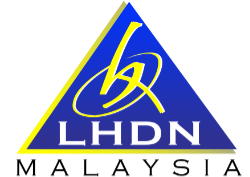The term"quoted price" refers to the price of the commodity in the relevant period obtained in a domestic or an international commodity exchange market. In this context, a quoted price may include prices recorded between independent buyers and sellers obtained from recognized and transparent price reporting or statistical agencies, or from governmental price-setting agencies, where such indexes are used as a reference by unrelated parties to determine prices in transactions between them.
CHAPTER X - Commodity Transactions
10.1 Subject to the guidance Chapter III selecting the most appropriate transfer pricing method in the circumstances of a particular case, the CUP method would generally be an appropriate transfer pricing method for establishing the arm’s length price for the transfer of commodities between associated enterprises. The reference to “commodities” shall be understood to encompass physical products for which a quoted price is used as a reference by independent parties in the industry to set prices in uncontrolled transactions.
10.3 Application of the CUP Method to Commodity Transactions
|
10.3.1
|
Under the CUP method, the arm’s length price for commodity transactions may be determined by reference to comparable uncontrolled transactions and by reference to comparable uncontrolled arrangements represented by the quoted price. Quoted commodity prices generally reflect the agreement between independent buyers and sellers in the market on the price for a specific type and amount of commodity, traded under specific conditions at a certain point in time. A relevant factor in determining the appropriateness of using the quoted price for a specific commodity is the extent to which the quoted price is widely and routinely used in the ordinary course of business in the industry to negotiate prices for uncontrolled transactions to the controlled transaction. |
| 10.3.2 | Based on the facts and circumstances of each case, quoted prices can be considered as a reference for pricing commodity transactions between associated persons. Taxpayers and the IRBM should be consistent in the application of the appropriately selected quoted price. |
| 10.3.3 |
For the CUP method to be reliably applied to commodity transactions, the economically relevant characteristics of the controlled transaction and the uncontrolled transactions or the uncontrolled arrangements represented by the quoted price need to be comparable. For commodities, the economically relevant characteristics include, among others, the physical features and quality of the commodity; the contractual terms of the controlled transaction, such as volumes traded, period of the arrangements, terms of credit, the timing and terms of delivery, transportation, insurance, and foreign currency terms |
| 10.3.4 |
Differences in certain economically relevant characteristics may lead to a premium or a discount. If the quoted price is used as a reference for determining the arm’s length price or price range, the standardized contracts which stipulate specifications on the basis of which commodities are traded on the exchange and which result in a quoted price for the commodity may be relevant |
| 10.3.5 |
Where there are differences between the conditions of the controlled transaction and the conditions of the uncontrolled transactions, or the conditions determining the quoted price for the commodity that materially affect the price of the commodity transactions being examined, reasonably accurate adjustments should be made to ensure that the economically relevant characteristics of the transactions are comparable. Contributions made in the form of functions performed, assets used and risks assumed by other entities in the supply chain should be compensated in accordance with the guidance provided in the Guidelines. |
10.4 Evidence of Price-Setting Policy to be Provided to the IRBM
In order to assist IRBM in conducting an informed examination of the taxpayer’s transfer pricing practices, taxpayers should provide as part of their transfer pricing documentation, reliable evidence and document comprising of:
- the price-setting policy for commodity transactions;
- the information needed to justify price adjustments based on the comparable uncontrolled transactions or comparable uncontrolled arrangements represented by the quoted price; and
- any other relevant information, such as pricing formulas used, third party end-customer agreements, broker price, premium or discounts applied, pricing date, supply chain information, and information prepared for non-tax purposes.
|
10.5.1
|
A particularly relevant factor for commodity transactions determined by reference to the quoted price is the pricing date, which refers to the specific time and date selected by the parties to determine the price for commodity transactions. |
| 10.5.2 | The selection of pricing date between related parties should be justified and evidence by proposals and acceptances, contracts or registered contracts, or other documents setting out the terms of the arrangements and compared with what independent buyers and sellers would have agreed in comparable circumstances. |
| 10.5.3 |
If the pricing date specified in any written agreement between the associated enterprises is inconsistent with the actual conduct of the parties or with other facts of the case, the IRBM will determine a different pricing date consistent with those other facts of the case and what independent enterprises would have agreed in comparable circumstances. |
| 10.5.4 |
When the taxpayer does not provide reliable evidence and justification of the pricing date agreed by the associated enterprises in the controlled transaction and the IRBM cannot otherwise determine a different pricing date in accordance with the Guideline, the IRBM may deem the pricing date for the commodity transaction on the basis of the evidence available to the IRBM. |
